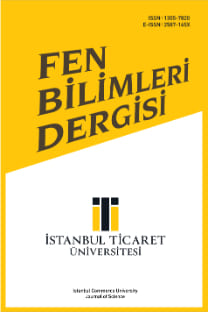Kısıtlar Kuramı Yaklaşımı ile Petrol İthalat ve Ulusallaştırma Sürecinin İyileştirilmesi
Kısıtlar Kuramı, Mantık Ağaçları, Maliyet, Lojistik
Kısıtlar Kuramı Yaklaşımı ile Petrol İthalat ve Ulusallaştırma Sürecinin İyileştirilmesi
-,
___
- Albright T. ve Lam M. (2006), “Managerial Accounting and Continuous Improvement Initiatives: A Retrospective and Framework”, Journal of Managerial Issues 18, 2, 157-176
- Balakrishnan J. ve Cheng C.H. (2005) “The Theory of Constraints and the Make-Or- Buy Decision: An Update and Review” The Journal of Supply Chain Management Winter, 40-47
- Bhattacharya A. ve Vasant P., (2007), “Soft-Sensing of Level of Satisfaction in TOC Product-Mix Decision Heuristic Using Robust Fuzzy-LP” European Journal of Operational Research, 177, 55–70
- Dettmer, H.W., (1997), Goldratt’s Theory of Constraints: A Systems Approach to Continuous Improvement, ASQC Press, Milwaukee, WI.
- Jones T.C. ve Dugdale D. (1998), “Theory of Constraınts: Transforming Ideas?” British Accounting Review 30, 73–91.
- Lubitsh G., Doyle C. ve Valentine J. (2005), “The Impact of Theory of Constraints (TOC) In an NHS Trust”, Journal of Management Development, 24, 2, 116-131.
- Mabin V. J., Davies J. ve Cox J. F. (2006), “Using the Theory of Constraints Thinking Processes to Complement System Dynamics’ Causal Loop Diagrams in Developing Fundamental Solutions”, International Transactıons in Operational Research 13, 33-57.
- Mcmullen, Jr. ve Thomas, B. (1998), Introduction to the Theory of Constraints (TOC) Management System, St Lucie Press, USA.
- Patwardhan M. B., Santamera A. S. ve Matchar D. B. (2006), “Improving the Process of Developing Technical Reports for Health Care Decision Makers: Using the Theory of Constraints in the Evidence-Based Practice Centers”, International Journal of Technology Assessment in Health Care, 22,1, 26-32.
- Polito T., Watson K. ve Vokurka R. J. (2003), “Using the Theory of Constraints to Improve Competitiveness”, JGC 11, 1, 112-120.
- Rand G.K. (2000), “Critical Chain: The Theory of Constraints Applied to Project Management” International Journal of Project Management 18, 173-177.
- Ritson N. ve Waterfield N. (2005) “Managing Change: The Theory of Constraints in the Mental Health Service”, Strategic Change 14, 449-458.
- Scheinkopf, L.J, (1999). Putting the TOC Thinking Processes to Use, St. Lucie Press, Boca Raton Tseng M. F., Wu H. H. (2006), “The Study of An Easy-to-Use DBR and BM System”, International Journal of Production Research 44, 8, 1449– 1478.
- Wei C. C., Liu P. H. ve Tsai Y.C. (2002), “Resource-Constrained Project Management Using Enhanced Theory of Constraint”, International Journal of Project Management 20, 561–567.
- ISSN: 1305-7820
- Yayın Aralığı: 2
- Başlangıç: 2002
- Yayıncı: Doç. Dr. Necip Şimşek
Variance Reduction Via Importance Sampling
Kısıtlar Kuramı Yaklaşımı ile Petrol İthalat ve Ulusallaştırma Sürecinin İyileştirilmesi
Şenay SADIÇ, Dilek ÖZDEMİR, Sıtkı GÖZLÜ
Customer-Focused Product Development and a Case Study in Turkish Refrigerator Market
Çağlar ÜÇLER, Özalp VAYVAY, Emine ÇOBANOĞLU
PRN Based Watermarking Scheme for Color Images
Ersin ELBAŞI, Ahmet M. ESKİCİOĞLU
Otomobil Satın Alma Problemi İçin Bir Karar Destek Modeli
Ümit TERZİ, Sinan Emre HACALOĞLU, Zerrin ALADAĞ
Kalite Kontrolde Örneklem Büyüklüğünün Değişken Olması Durumunda p Kontrol Şemalarının Oluşturulması
İrfan ERTUĞRUL, Nilsen KARAKAŞOĞLU
Kaliteli İş Yaklaşımı Problemi İçin Bulanık Mantık Yaklaşımı
Efendi N. NASİBOV, A.övgü KINAY
Optimal Knowledge Flow On the Internet
The Use of Back-Propagation Algorithm in the Estimation of Firm Performance
Ali HAYDAR, Zafer AĞDELEN, Pınar ÖZBEŞEKER
